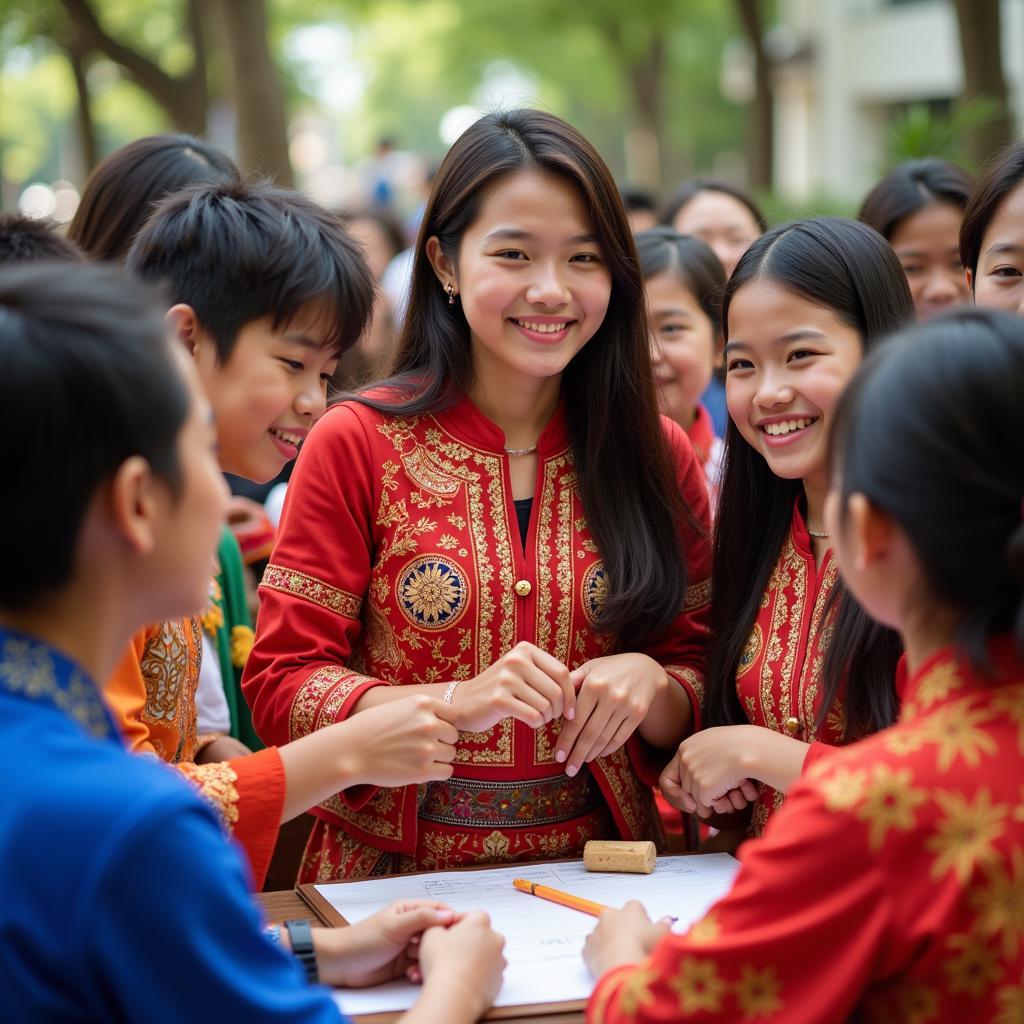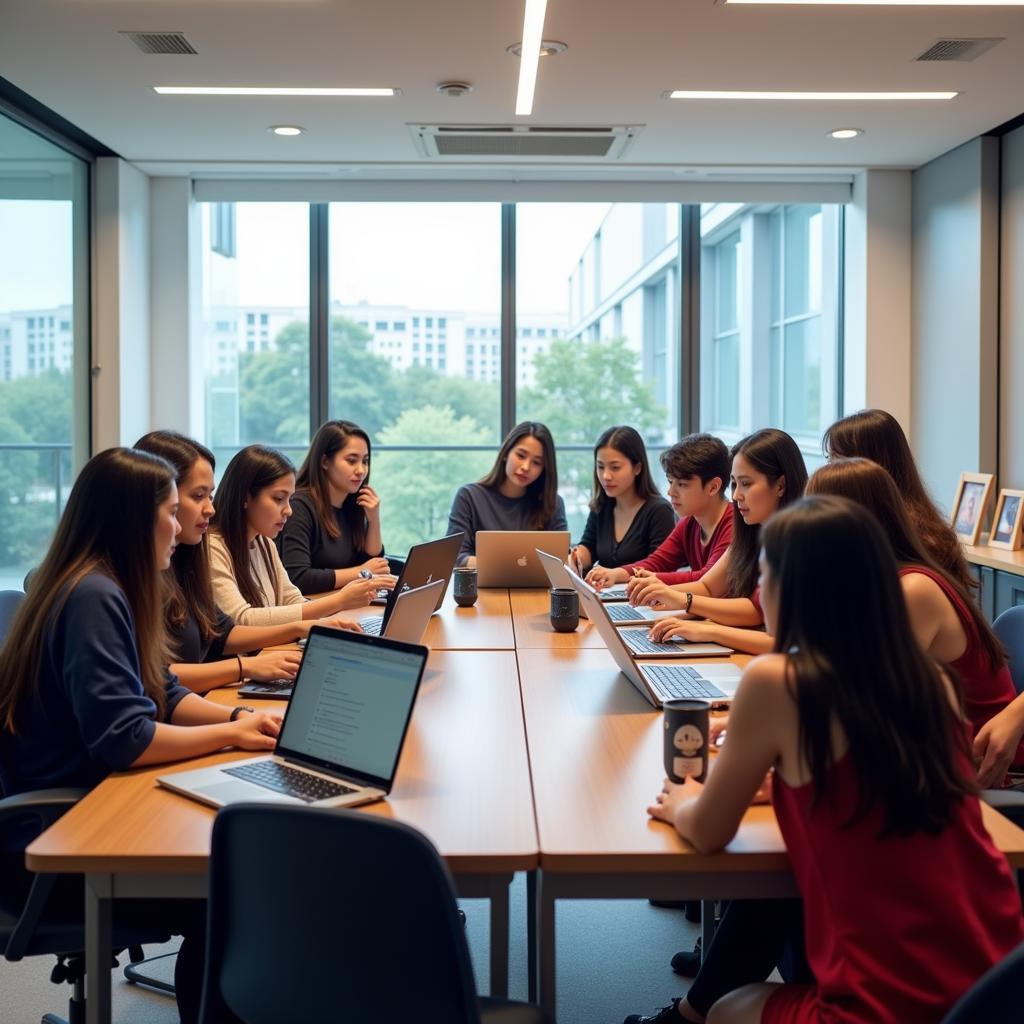The concept of an “ASEAN high school” represents a progressive vision for educational unity and collaboration within Southeast Asia. While not yet a concrete reality, the idea highlights the growing need and potential for cross-cultural learning experiences that prepare students for an interconnected world.
What Could an ASEAN High School Look Like?
Imagine a high school where students from all 10 ASEAN member states come together to learn, share, and grow. This wouldn’t necessarily be one physical school, but a network of institutions across Southeast Asia committed to a shared vision:
- Multilingual Curriculum: Offering a core curriculum taught in English, Malay, or other prominent regional languages to foster communication skills and cultural understanding.
- ASEAN-centric Studies: Integrating subjects like ASEAN history, culture, economics, and politics to foster a sense of regional identity and citizenship.
- Student Exchange Programs: Facilitating short-term and semester-long exchanges for students to experience different ASEAN countries firsthand.
- Collaborative Projects: Encouraging joint research projects, cultural exchanges, and problem-solving initiatives among students from different ASEAN nations.
 Students from different ASEAN countries participating in a cultural exchange program
Students from different ASEAN countries participating in a cultural exchange program
Benefits of an ASEAN High School Network
The establishment of an ASEAN high school network, even if virtual, could offer numerous benefits:
- Enhanced Cultural Understanding: Breaking down stereotypes and prejudices by fostering direct interaction and empathy among ASEAN youth.
- Improved Language Skills: Providing an immersive environment for students to master regional languages, crucial for future collaboration and employment.
- Increased Global Competitiveness: Equipping students with the knowledge, skills, and cross-cultural competencies to thrive in an interconnected world.
- Stronger Regional Ties: Cultivating a new generation of leaders and citizens who are deeply connected to the ASEAN community and its shared future.
Challenges and Opportunities
Creating an ASEAN high school network comes with its share of challenges:
- Funding and Infrastructure: Securing adequate funding and resources for program development, teacher training, and student support would be crucial.
- Language Barriers: Overcoming language differences among students and educators through innovative teaching methodologies and language support programs.
- Curriculum Harmonization: Developing a curriculum that respects cultural diversity while ensuring academic rigor and alignment with national education standards.
 Students from different ASEAN countries working together on a project in a modern classroom
Students from different ASEAN countries working together on a project in a modern classroom
Despite these challenges, the potential rewards of an ASEAN high school network are immense. It signifies a commitment to investing in the region’s future, fostering unity in diversity, and empowering ASEAN youth to become global citizens.
FAQ about ASEAN High School Initiatives
1. Are there any existing ASEAN high schools?
While a dedicated ASEAN high school doesn’t exist yet, several schools within ASEAN countries offer specialized programs with an international or ASEAN focus.
2. How can I learn more about ASEAN educational initiatives?
The ASEAN Secretariat website and the SEAMEO (Southeast Asian Ministers of Education Organization) website provide information on regional educational programs.
3. What are some existing student exchange opportunities in Southeast Asia?
The ASEAN University Network (AUN) and the SHARE (European Union Support to Higher Education in the ASEAN Region) program offer exchange opportunities for university students. High school students can explore programs like the AFS Intercultural Programs or Rotary Youth Exchange.
Exploring Further
To learn more about education in Southeast Asia and the potential for future collaboration, explore these resources on our website:
- ASEAN Scholarships and Educational Opportunities
- The Future of Education in Southeast Asia
- Building Bridges: The Role of Youth in ASEAN Integration
For any inquiries or assistance, please don’t hesitate to contact us:
Phone Number: 0369020373
Email: [email protected]
Address: Thôn Ngọc Liễn, Hiệp Hòa, Bắc Giang, Việt Nam
Our dedicated customer support team is available 24/7 to assist you.

